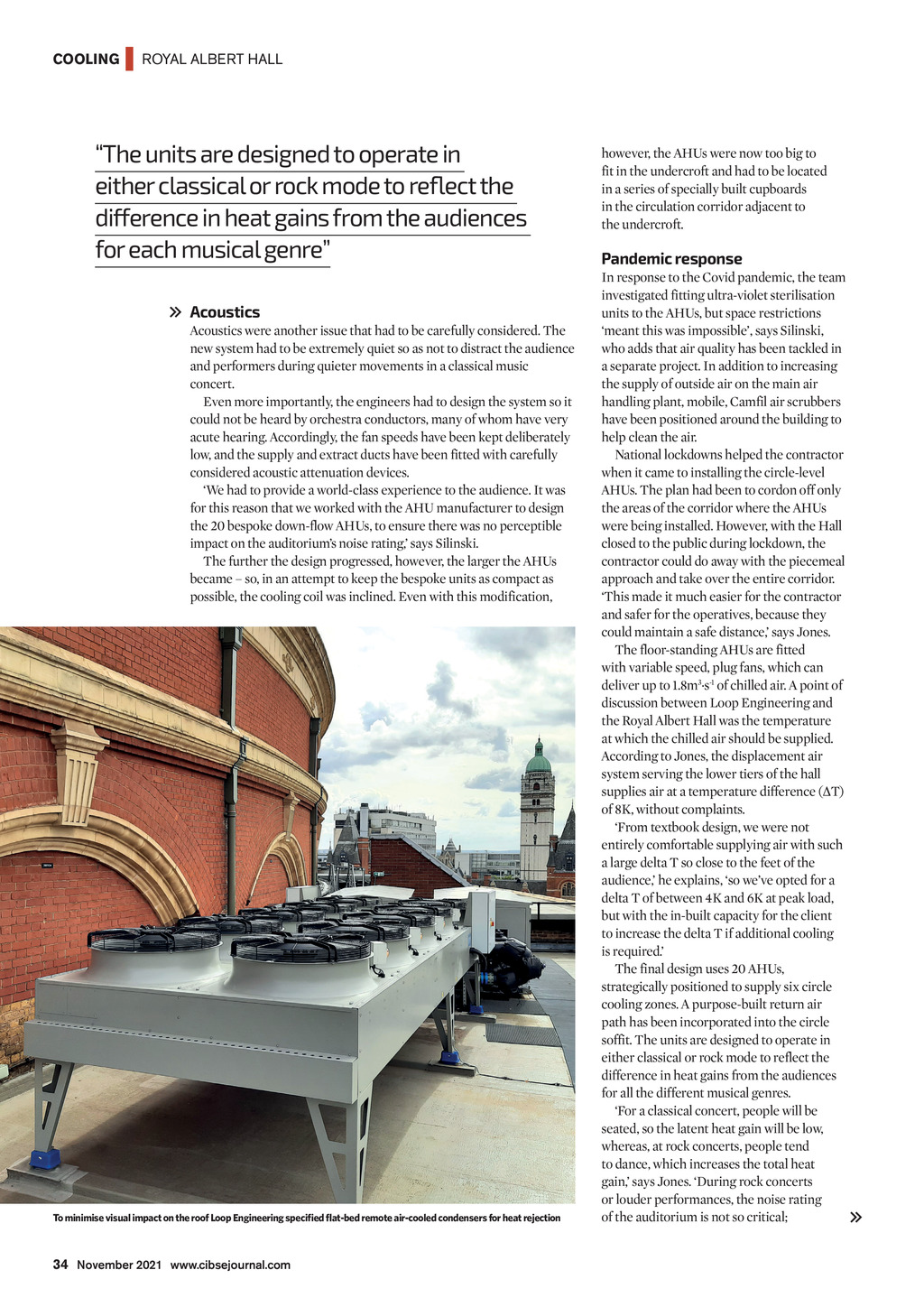




COOLING | ROYAL ALBERT HALL The units are designed to operate in either classical or rock mode to reflect the difference in heat gains from the audiences for each musical genre Acoustics Acoustics were another issue that had to be carefully considered. The new system had to be extremely quiet so as not to distract the audience and performers during quieter movements in a classical music concert. Even more importantly, the engineers had to design the system so it could not be heard by orchestra conductors, many of whom have very acute hearing. Accordingly, the fan speeds have been kept deliberately low, and the supply and extract ducts have been fitted with carefully considered acoustic attenuation devices. We had to provide a world-class experience to the audience. It was for this reason that we worked with the AHU manufacturer to design the 20 bespoke down-flow AHUs, to ensure there was no perceptible impact on the auditoriums noise rating, says Silinski. The further the design progressed, however, the larger the AHUs became so, in an attempt to keep the bespoke units as compact as possible, the cooling coil was inclined. Even with this modification, however, the AHUs were now too big to fit in the undercroft and had to be located in a series of specially built cupboards in the circulation corridor adjacent to the undercroft. Pandemic response In response to the Covid pandemic, the team investigated fitting ultra-violet sterilisation units to the AHUs, but space restrictions meant this was impossible, says Silinski, who adds that air quality has been tackled in a separate project. In addition to increasing the supply of outside air on the main air handling plant, mobile, Camfil air scrubbers have been positioned around the building to help clean the air. National lockdowns helped the contractor when it came to installing the circle-level AHUs. The plan had been to cordon off only the areas of the corridor where the AHUs were being installed. However, with the Hall closed to the public during lockdown, the contractor could do away with the piecemeal approach and take over the entire corridor. This made it much easier for the contractor and safer for the operatives, because they could maintain a safe distance, says Jones. The floor-standing AHUs are fitted with variable speed, plug fans, which can deliver up to 1.8m3.s-1 of chilled air. A point of discussion between Loop Engineering and the Royal Albert Hall was the temperature at which the chilled air should be supplied. According to Jones, the displacement air system serving the lower tiers of the hall supplies air at a temperature difference ( T) of 8K, without complaints. From textbook design, we were not entirely comfortable supplying air with such a large delta T so close to the feet of the audience, he explains, so weve opted for a delta T of between 4K and 6K at peak load, but with the in-built capacity for the client to increase the delta T if additional cooling is required. The final design uses 20 AHUs, strategically positioned to supply six circle cooling zones. A purpose-built return air path has been incorporated into the circle soffit. The units are designed to operate in either classical or rock mode to reflect the difference in heat gains from the audiences for all the different musical genres. For a classical concert, people will be seated, so the latent heat gain will be low, whereas, at rock concerts, people tend to dance, which increases the total heat gain, says Jones. During rock concerts or louder performances, the noise rating of the auditorium is not so critical; 34 November 2021 www.cibsejournal.com CIBSE Nov21 pp32-34, 36 Royal Albert Hall.indd 34 22/10/2021 15:30